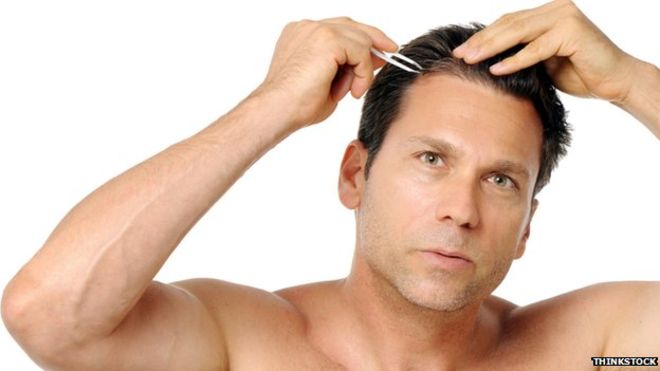(BBC) - Plucking hairs in a precise pattern can make even more pop up in their place, a US study suggests.
Playing with the density of hair removed altered how serious an injury the body recognised and in turn how much hair regrew.
The team managed to regenerate 1,300 hairs by plucking 200, in the study using mice reported in Cell journal.
Experts said it was "really nice science" but were uncertain if it could lead to a cure for human baldness.
Half of men have male-pattern baldness by the age of 50.
The team at the University of Southern California were investigating how hair follicles communicate with each other to decide on the scale of repair job needed.
Inflammation
In a series of experiments they removed 200 hair follicles from a circular patch of skin in mice.
A low-density pluck - removing follicles from a patch 6mm in diameter - led to no regeneration at all.
A medium-density pluck, with 200 removed from a 5mm circle, led to 1,300 new hairs.
A higher-density effort, with the same number of hairs but from a 4mm diameters circle, led to 780 new hairs.
Pulling every hair out led to every hair coming back, but no extra regeneration.
The researchers showed that the level of inflammation under the skin was finely tuned to the scale of the damage.
And through a cascade of chemical signalling and immune responses, this controlled the amount of regeneration.
The team say it is like each hair gets a vote about what happens next and when it reaches a critical threshold it can trigger regeneration. They call the concept "quorum sensing".
Lead researcher Dr Cheng-Ming Chuong said: "It is a good example of how basic research can lead to work with potential translational value.
"The work leads to potential new targets for treating alopecia, a form of hair loss."
Pathway
Chris Mason, professor of regenerative medicine at University College London, told the BBC: "It's a really nice piece of science. The idea of quorum sensing is smart."
But it is not known whether it will cure human baldness.
Prof Mason added: "That's the million-dollar question. I'm not sure. As it stands here, you've got to have some hair to pluck.
"A lot of studies have produced hair, but it's too fine - it's baby hair, it's light-coloured and it just doesn't look right. But here we can infer they are adult hairs so that is something that is a step change.
"Could you tap into the pathway with a cream or injection? That could well be possible - or maybe don't wait until you're totally bald?"
www.ann.az
Follow us !











